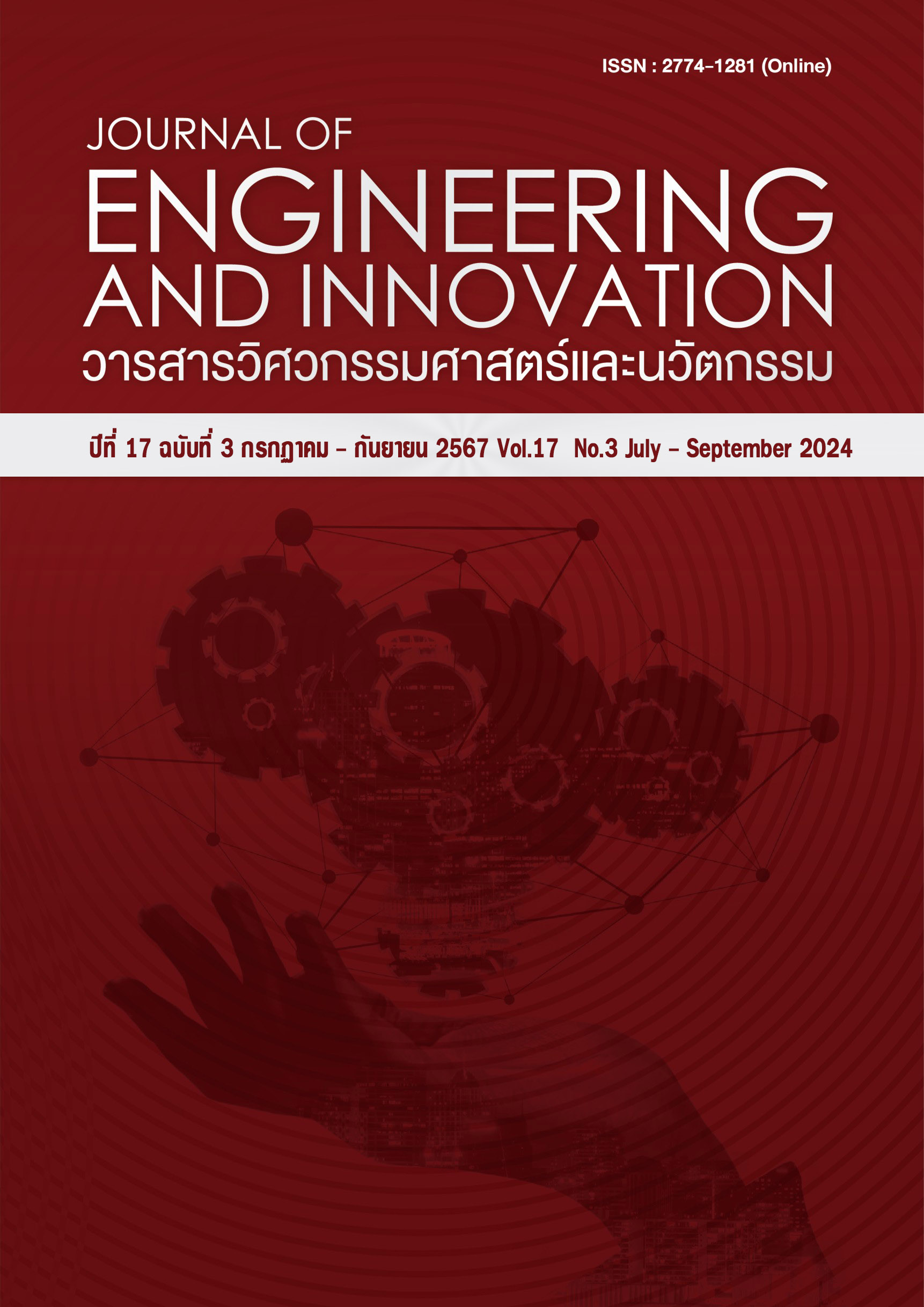Assessment of Significant Wave Heights in Thailand using ECMWF and NCEP Wind Data
Main Article Content
Abstract
Thailand’s electricity production is facing a series of challenges, including import of fossil fuels, use of limited resources and increased demand for electricity. These things have an impact on the environment. to manage these problems Choosing to use renewable energy is one interesting option. Especially wave energy, which is a renewable energy source created by harnessing the kinetic energy of ocean waves. It is considered a renewable energy that has the potential to produce a large amount of electricity. This study is based on a comprehensive review of oceanographic data, such as significant wave height, wave periods and directions and the topography of the coastline. This study used a numerical model called Simulated Nearshore Waves (SWAN) to simulate wave propagation and evaluate the energy potential of waves. Using seabed data from the GEBCO dataset and wind data from the European Center for Medium Range Weather Forecasts (ECMWF) and the National Environmental Forecasting Center (NCEP). However, the objective of this study is to compare the significant wave height data calculated from the SWAN model with the measurement data from the Jason satellite and to determine which wind data sources are suitable for analyzing the wave energy potential in the Thai sea. By calibrating data from all three monsoon seasons in 2009 and after Tropical Storm Babuk in 2019, the model was checked through calculations. Root Mean Square Error (RMSE) is used to evaluate the accuracy of the model and evaluate the performance of the SWAN model using the Scatter Index (SI). From the study it was found that the calculations obtained from the ECMWF wind data provide better results than the calculations from the NCEP wind data due to the higher spatial and temporal resolution. The results of this study provide preliminary information for considering the assessment of wave energy potential in the Thai sea.
Article Details
References
Akpınar A, van Vledder GPh, Kömürcü Mİ, Özger M. Evaluation of the Numerical Wave Model (SWAN) for the Wave Simulation in the Black Sea. Continental Shelf Research. 2012;(50-51): 80-99. Available from: doi: 10.1016/j.csr.2012.09.
[Accessed 20th March 2023]
Ekkawatpanit C. Kositgittiwong D. Kompor W. Foyhirun C. The Possibility of Promoting Wave Energy in the Coastal Zone of Thailand. In: Fungtammasan B, Ishihara K. (eds.) Energy & Climate Change: Innovating for a Sustainable Future, 28-30 Nov 2016, Bangkok, Thailand, Bangkok: 2016. P. 1-4.
Foyhirun C, Kositgittiwong D, Ekkawatpanit C. Wave energy potential and simulation on the Andaman Sea coast of Thailand. Sustainability. 2020 May 1;12(9):3657. Available from: doi:10.3390/su12093657 [Accessed 20th March 2023]
Lagoun MS, Benalia A, Benbouzid MEH. Ocean Wave Converts: State of the Art and Current Status. In: Al-Hitmi M, Al-Emadi N, Hamila R. (eds.) IEEE International Energy Conference. 2009. P. 636-641.
Kanchana N, Jompob, W. Assessment of Sea Wave Power Potential in the Gulf of Thailand Using Simulating Wave Nearshore (SWAN). Thaksin University Journal. 2016;19(1): p. 12-30.
Kompor W, Ekkawatpanit C, Kositgittiwong D. Assessment of Ocean Wave Energy Resource Potential in Thailand. Ocean and Coastal Management. 2018 Jun; 160: 64–74. Available from: doi: 10.1016/j.ocecoaman. 2018.04.003 [Accessed 20th March 2023]
Kositgittiwong D, Ekkawatpanit C, Wannawong W. Numerical Simulation of Ocean Waves for Hydropower Generation in Thailand. In: Falconer R. (eds.) Proceedings of the 19th IAHR-APD Congress 2014 Hanoi Vietnam. Hanoi Vietnam: 2014. p. 1-6.
Liang B, Gao H, Shao Z. Characteristics of global waves based on the third-generation wave model swan. Marine Structures. 2019;64: 35–53. Available from: doi: 10.1016/j.marstruc.2018.10.011
Benelghali S, Benbouzid M, Charpentier JF. Marine tidal current electric power generation technology: State of the Art and Current Status. Proceedings of IEEE IEMDC'07, May 2007, Antalya (Turkey), Turkey; 2007. p. 1407-1412.
The SWAN Team. Input and output files. In: Delft University of Technology (eds.) SWAN USER MANUAL. Netherlands: 2022. p. 21-87
Watin T, Nakhapakorn K, Pumijumnong N. Application of SWAN Model for Investigate Save Characteristics in the Gulf of Thailand During Typhoon Muifa. Science and Technology Journal. 2011;19(3): 40-50.

